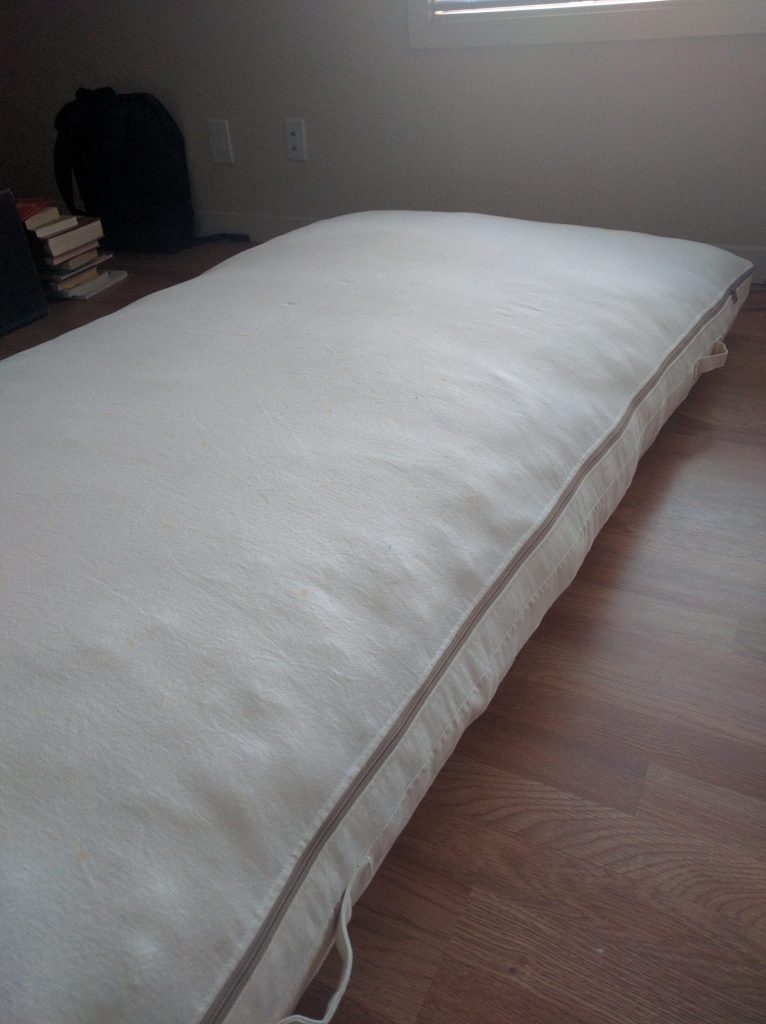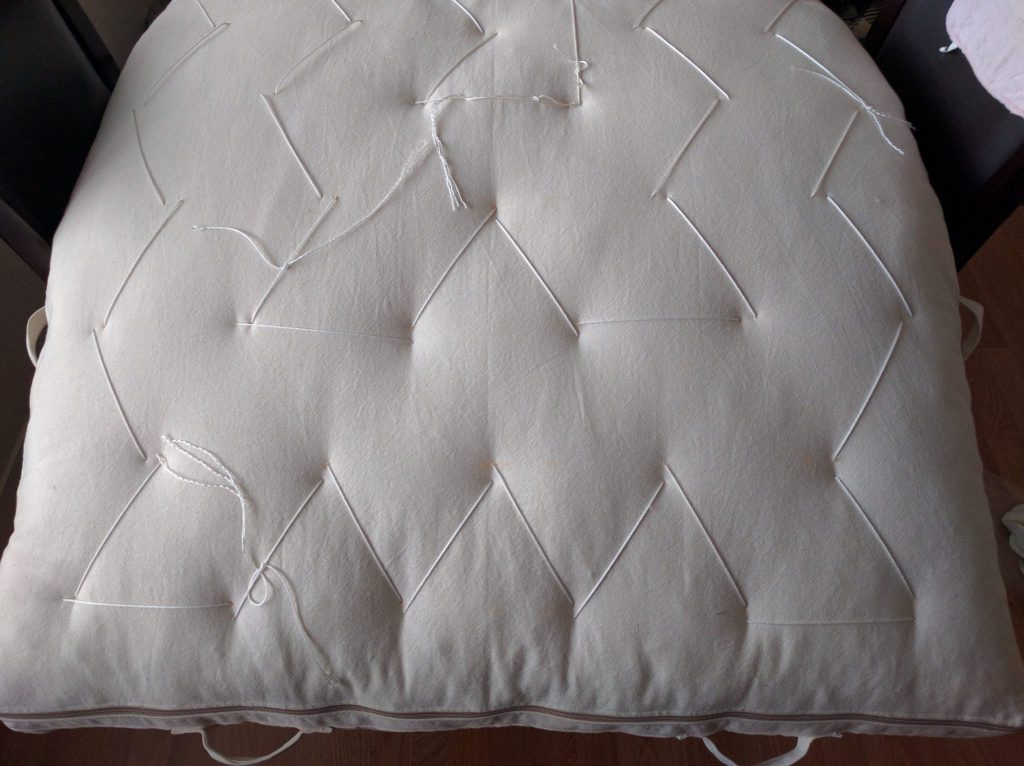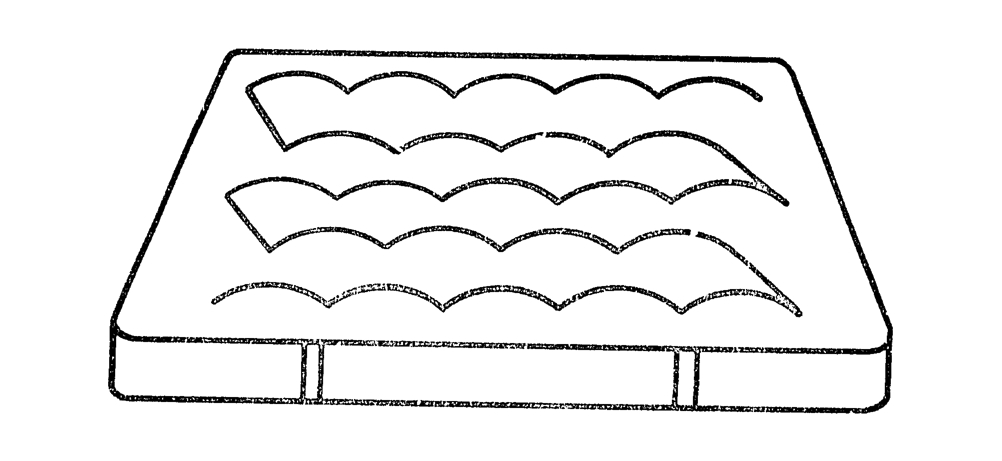
After stuffing the mattress, you need to lace and tuft it. In a mattress, tufting compresses the stuffing to give it a specific feel (for wool, springier and firmer). It also helps hold the stuffing in place. If a wool mattress isn’t tufted, then as you sleep on it, the wool will tend to shift to the edges of the mattress, leaving you in a ditch. And you need to lace before you tuft.


You lace a mattress by sticking a giant needle (mine is 10″ long) from top to bottom through the mattress, then back from bottom to top about 1 cm from the first needle hole. You do this at every point where you want a tuft, using a continuous piece of string. I wanted my final tufts to be 6″ apart.
To make it easier to lace the mattress, I raised the mattress a couple feet off the ground by supporting it on chairs. Actual mattress makers have slatted tables to make it easier to reach the needle from the bottom of the mattress.

